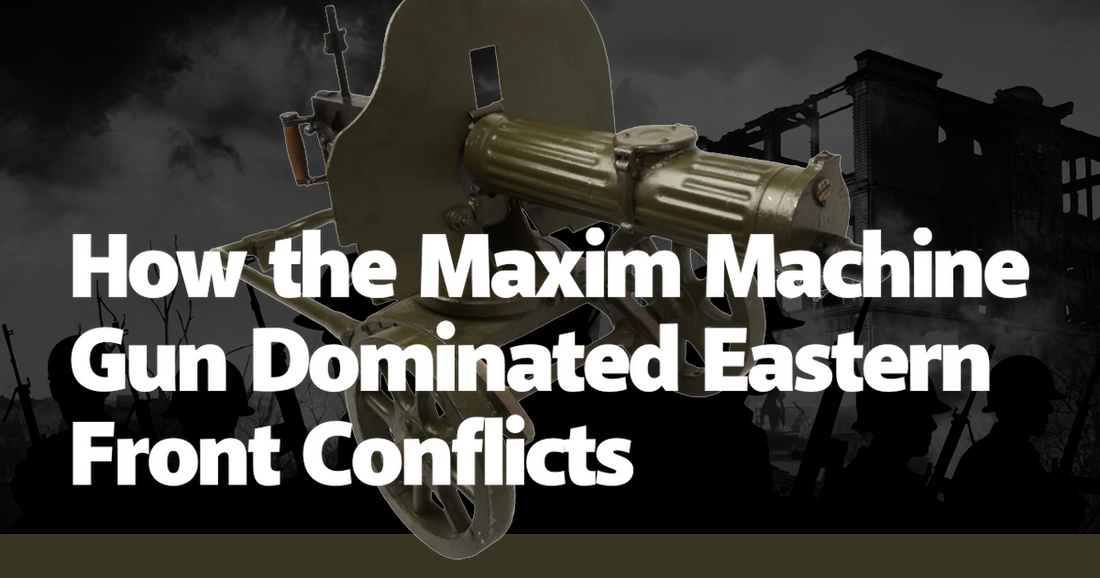The Maxim machine gun, a marvel of late 19th-century engineering, reshaped the dynamics of warfare on the Eastern Front during the early 20th century. Its introduction brought a paradigm shift in military tactics and strategy, turning the tides of numerous conflicts. The brainchild of Sir Hiram Maxim, this automatic weapon was the first of its kind, capable of sustained fire through a recoil-operated mechanism. When it debuted, it was revolutionary, transforming the battlefield from a place of individual valor to a domain dominated by industrial-scale lethality. The Eastern Front, with its vast expanses and entrenched positions, became a proving ground for the Maxim's formidable capabilities.
One of the most striking examples of the Maxim's impact was during the Russo-Japanese War of 1904-1905. The Russian forces, equipped with Maxim guns, faced the Japanese in brutal confrontations. In battles such as the Siege of Port Arthur, the Maxim demonstrated its devastating efficiency. Japanese infantry charges were mowed down with chilling regularity, illustrating the gun's ability to maintain a high rate of fire without the need for frequent reloading. This mechanized slaughter forced both sides to reconsider traditional mass assault tactics, paving the way for more sophisticated strategies that would later be seen in World War I.
World War I further cemented the Maxim machine gun's legacy, particularly on the Eastern Front, where the vast, open landscapes of Eastern Europe were ideal for its deployment. The Battle of Tannenberg in 1914 is a case in point. German forces, utilizing Maxim MG 08s, decimated Russian troops, who were often caught in the open. The sheer volume of fire from the Maxim guns created a no-man's-land, where advancing troops were cut down en masse. This battle not only highlighted the gun's lethal efficiency but also underscored the need for new tactics, such as trench warfare, to mitigate its devastating effects.
The psychological impact of the Maxim machine gun on soldiers cannot be understated. Anecdotes from the front lines reveal a deep-seated fear and respect for the weapon. Russian soldiers, for instance, referred to it as the "Devil's Paintbrush," a testament to its ability to sweep across the battlefield with deadly precision. The constant rattle of the Maxim, with its distinctive sound, became a harbinger of death. Veterans recounted the terror of hearing its staccato bursts, knowing that any moment could be their last. This psychological warfare was as effective as the physical destruction wrought by the gun, breaking the morale of enemy troops and sowing chaos in their ranks.
The Maxim's dominance on the Eastern Front also spurred significant advancements in military technology and tactics. Armies began to develop countermeasures, such as more effective artillery barrages designed to neutralize machine gun nests before infantry advances. The development of tanks and armored vehicles was also accelerated, as these provided some protection against the withering fire of the Maxim. Additionally, the concept of combined arms warfare, where different branches of the military worked in concert to achieve strategic objectives, gained traction. The need to overcome the Maxim's deadly efficiency drove innovation and adaptation, reshaping military doctrines for decades to come.
Despite its fearsome reputation, the Maxim machine gun had its limitations, which became apparent as the war dragged on. Its weight and complexity made it less mobile compared to lighter, more modern machine guns that emerged later. The need for a crew to operate it effectively also meant that it was less versatile in fast-moving engagements. However, these limitations did not diminish its overall impact on the Eastern Front. Instead, they highlighted the evolving nature of warfare, where technological advancements continually prompted new tactical and strategic considerations.
In a broader historical context, the Maxim machine gun's role on the Eastern Front exemplifies the brutal efficiency of industrialized warfare. It was a harbinger of the mechanized conflicts that would define the 20th century, where human ingenuity was often turned towards creating more effective means of destruction. The lessons learned from its deployment influenced military thinking long after the guns fell silent. The Maxim's legacy is a sobering reminder of the relentless march of technological progress in the realm of warfare, where each new innovation brings both strategic advantages and profound ethical dilemmas.
Today, the Maxim machine gun is a symbol of a bygone era, a relic of a time when the industrial revolution's fruits were turned towards the grim task of war. Museums and historical reenactments preserve its memory, offering a tangible link to the past. For military historians and enthusiasts, the Maxim remains a subject of fascination, a testament to human ingenuity and the complexities of war. Its story on the Eastern Front is a compelling chapter in the broader narrative of military history, illustrating how a single technological innovation can alter the course of conflicts and shape the destinies of nations.

